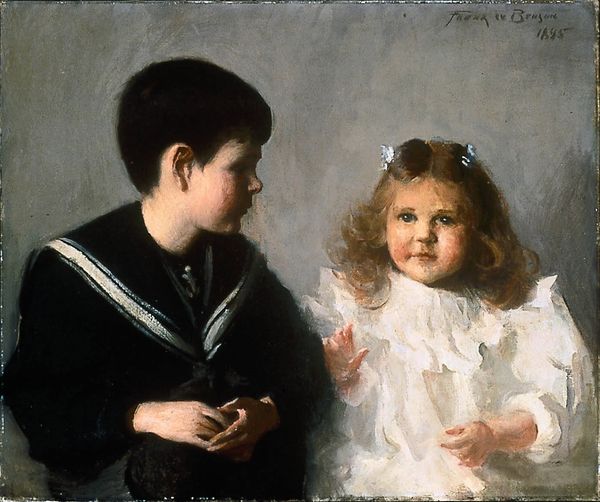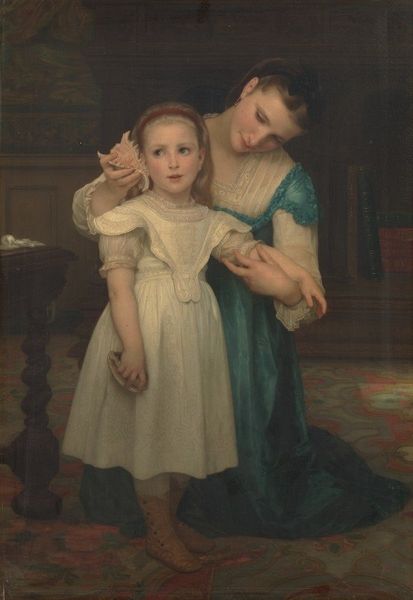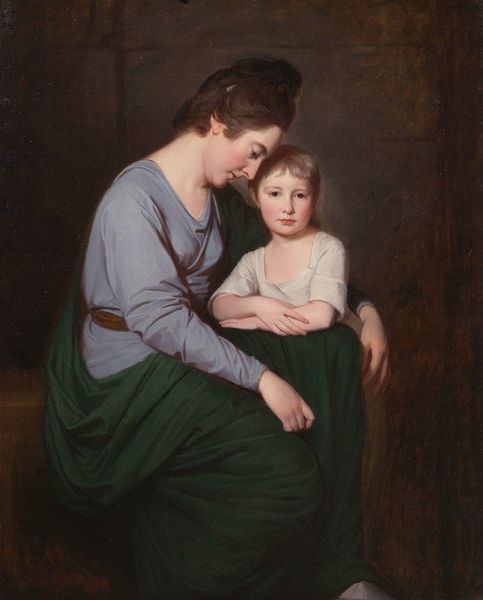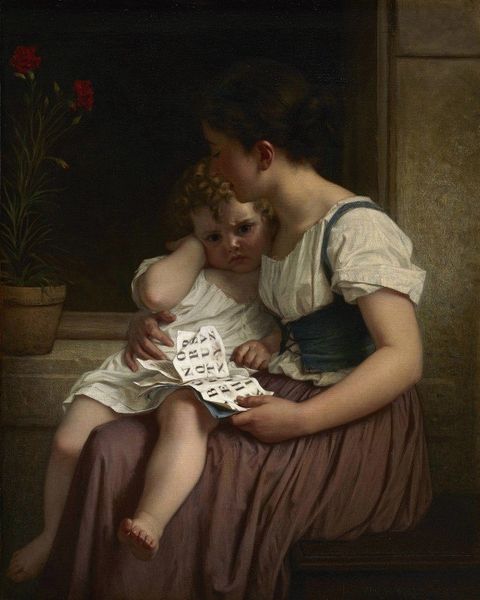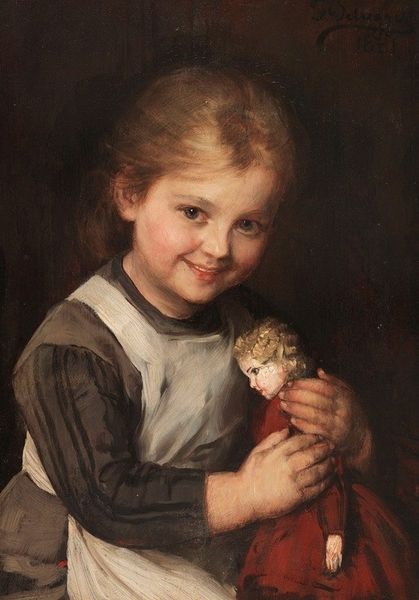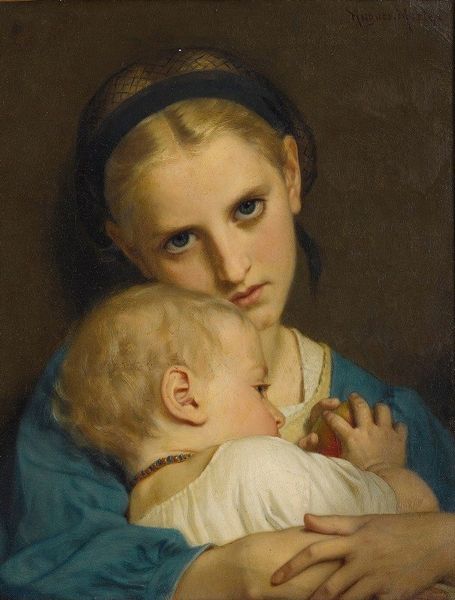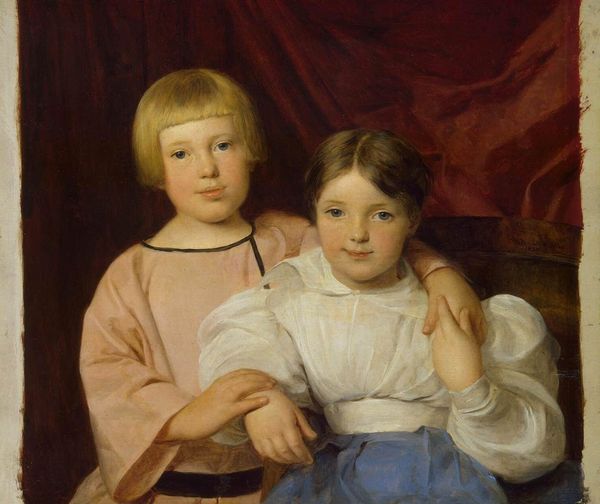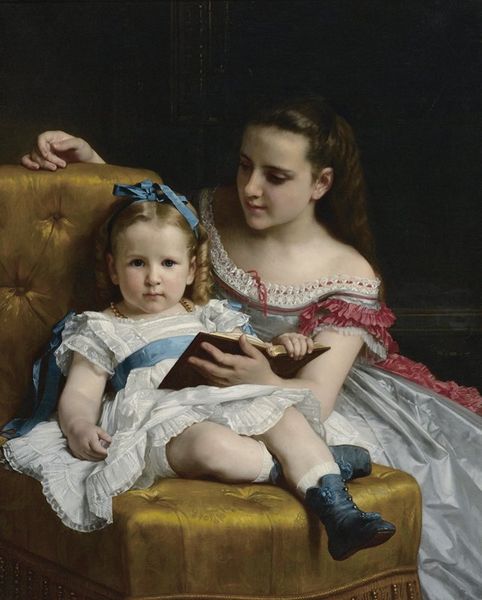
painting, oil-paint
#
portrait
#
figurative
#
painting
#
oil-paint
#
figuration
#
romanticism
#
genre-painting
Copyright: Public Domain: Artvee
Curator: Here we have Wilhelm Marstrand’s painting "Portrait of the Artist’s Wife with their Son Poul on her Lap." It’s quite intimate, wouldn’t you agree? Editor: Yes, it strikes me immediately as an exploration into early family life through a somewhat stuffy, but nonetheless sentimental, lens. The fabric of her dress looks almost sculptural in its rendering. What about you? Curator: Absolutely. The way he's captured that soft, almost-glowing light on the child's face—it's as though Poul himself is the source of illumination, a little sunbeam warming up this domestic scene. The details in the mother’s dark dress against her skin is gorgeous. Editor: It's a compelling interplay between the surface-level tenderness and the underlying societal forces at play. I mean, look at the materials they're draped in, from her practical yet dignified dress, with the very fine white linen at the neck, to his simple baby dress, most likely sewn at home by his mother. The evidence of the home's furnishing is equally sparse and clearly made to last with a dark almost empty background only decorated with a potted flower arrangement. Curator: True. And it’s tempting to see the painting itself as part of that material culture – a way of solidifying and celebrating domestic bliss within a specific social strata. It speaks volumes, or whispers them rather, of belonging and quiet contentment. A moment captured but somehow made timeless, you know? The simple shapes become iconic through this gaze of a doting husband and father. Editor: The romanticism of this, where feelings about his wife and baby is transformed through labor and artistic prowess is intriguing. But there's also a labor involved in keeping up appearances, isn't there? The pressure on women to manage the household with scant resources and the way art both reveals and conceals these power dynamics. It makes me want to delve into Marstrand's relationship with the materials he used: Where did he get his paints? Who prepared his canvas? How does artistic labor compare with other forms of work within their community? Curator: That’s an angle I hadn’t fully considered before, but it adds layers, doesn’t it? It turns a seemingly straightforward domestic portrait into something richer, more complex—a negotiation between affection, social status, and the quiet hum of everyday existence. Editor: Exactly. What appeared saccharine suddenly reveals a complicated meshwork. It proves, once again, how art can invite not just appreciation but active engagement and a reconsideration of our preconceived notions about historical depictions of family. Curator: Indeed. I think I’ll carry that with me for a good while.
Comments
No comments
Be the first to comment and join the conversation on the ultimate creative platform.
